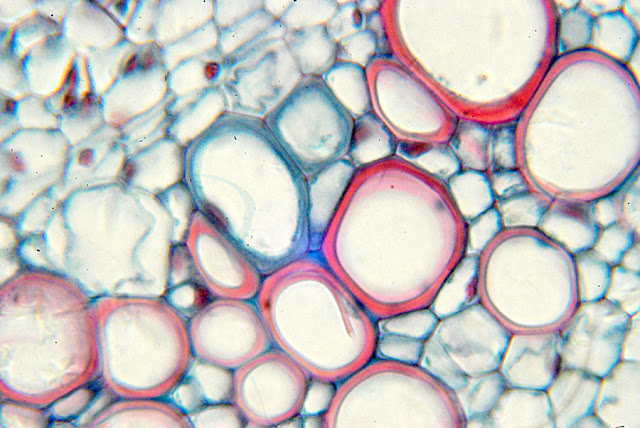Cells - division, structure and functions
Cells
The smallest entities of the body, capable to executing important life functions.
Photo by Krzysztof (Kriss) Szkurlatowski from FreeImages
What types of cells are there?
Levels of cellular organization of organisms
Monocellular organisms - are made of only one cell, which is responsible for executing all life functions e.g.:
- bacteria,
- protists
- fungi
- originally water plants
Colony forms - cell assemblies connected together by cell walls. They are an intermediate stage between monocellular and multicellular organisms e.g.:
- bacteria
- protists
Multicellular organisms - are made of many cells, divided into:
• Thallus organisms - have body undifferentiated or weakly differentiated into tissues e.g.:
- protists
- fungi
- originally water plants
• Tissues organisms - have body differentiated into tissues. Each of them has a different structure and executes a specific function e.g.:
- plants
- animals
Substance transport in cells
There is a reason why the cells are small. In small cells, the surface to volume ratio is large, which facilitates efficient transport. As the cell size increases, the surface-to-volume ratio decreases, and transport becomes less efficient.
Eukaryotic cells
ANIMAL CELL STRUCTURE
Nucleus - contains DNA, which is genetic material responsible for the characteristics of the organism and processes associated with inheritance of features. Consists of:
- nuclear envelope - the double membrane surrounding the nucleus; is the barrier between the cytoplasm and the nucleoplasm
- nuclear pores - holes in the nuclear envelope to transport molecules from the nucleus to the cytoplasm or in the opposite direction
- nucleolus - membrane-free structure, involved i.a. in the production of ribosomes
- chromatin - matter containing DNA and proteins
Cytoplasm:
Cytosol - an aqueous, colloidal solution that fills the inside of the cell
Ribosomes - organelles involved in protein synthesis; located in the cytosol, on the rough endoplasmic reticulum or on the outer membrane of the nuclear envelope.
Ribosomes - organelles involved in protein synthesis; located in the cytosol, on the rough endoplasmic reticulum or on the outer membrane of the nuclear envelope.
Centrioles - cell organelles involved in the division of animal, fungal cells and some protozoa and algae.
Microtubules - hollow tubes building the cytoskeleton.
Plasma membrane - separates the cell from the environment; animal cell do not have a cell wall.Secretory vesicle - is used to transport the substance outside and inside the cell.
Endoplasmatic reticulum (ER) :
- smooth ER - is a place for lipid synthesis, ion storage and detoxification of toxic substances.
- rough ER - there are ribosomes on it; it's a place for protein synthesis.
Golgi apparatus - is responsible for modifying, sorting and transporting proteins.
Lysosomes - intracellular digestion occurs in them.
Peroxisomes - are place of the oxidation reaction of various compounds and the neutralization of reactive oxygen forms.
Peroxisomes - are place of the oxidation reaction of various compounds and the neutralization of reactive oxygen forms.
Vacuole - stores substances, takes part in digestion, is responsible for the state of cell hydration.
Mitochondrion - aerobic respiration occurs in them, as a result of which energy is released.
PLANT CELL STRUCTURE
Chloroplasts - organelles responsible for photosynthesis.
Cell wall - outer layer that maintains the shape of the cell and protects against damage; it is mainly made of cellulose
FUNGAL CELL STRUCTURE
Cell wall - mainly made of chitin
Prokaryotic cells
BACTERIAL CELL STRUCTURE
Pilus - thin appendix of the cytoplasm that perform motor functions.
Capsule - made of water and polysaccharides, protects the cell from drying out, viruses and harmful substances, regulates the absorption of substances into the cell
Cell wall - mainly made of murein
Flagellum - motion organellum growing from the cell surface. Sometimes it also occurs in an animal cell.
Mesosome - protrusion of the cell membrane to the cytoplasm, which is the effect of the chemicals used for microscopy; performs unspecified function.
Plasmid - small circular DNA molecule. It contains genes that are useful, but not necessary to bacteria life.
Bacterial chromosome - circularly closed DNA molecule. It contains all genes necessary for the cell function. The cytosol region along with chromosome is a nucleoid.









Comments
Post a Comment